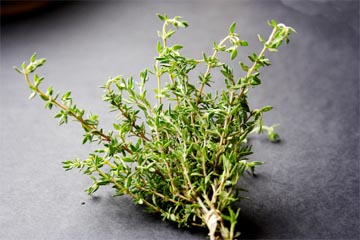Precious thyme
Hi Everyone,
Given that long ago thyme was used for its antiseptic properties and medicinal uses, and in ancient times some bathed in its water to renew their energy while others used it for embalming, we should really feel fortunate, to be able to get three varieties of this herb while many the world over only get one variety and I’m not talking about flavours here but rather, thyme in general.
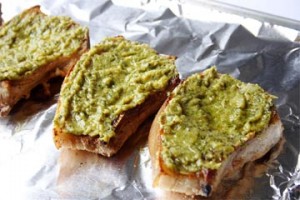
If there was one herb that is identified with everyday Caribbean cuisine, it is thyme. As much as we love pepper, we would forgo it if we had to make a choice between buying that and thyme when we go shopping. We use it in almost everything; sometimes a dish might not require it but we sneak it in nevertheless because it will give the dish that special oomph in the flavour. The three varieties we get have no scientific names for us, we just call them thyme but for the sake of this column, I am going to differentiate them for you based on how we would ask for it at the market.
The most popular variety is the one with the very fine, almost tiny leaves. When you want to purchase this thyme, simply ask for thyme. The other variety which is not that well known throughout the Caribbean except Guyana, is usually referred to as Guyanese thyme, as long as you are purchasing it outside of Guyana. In Guyana itself, it is referred to as “fine thyme”. This variety grows tall in clusters and the leaves are flat and small and shaped almost like oregano. Actually the vendor I purchase thyme from refers to it as oregano, never mind most of his thyme customers are Guyanese and will ask him for “Guyanese thyme”. The third variety is called broad-leaf thyme and if you’ve been reading this column long enough, you know that we name things and call them as we see them. So, broad leaf thyme literally means that the leaves are broad. They are also thick.
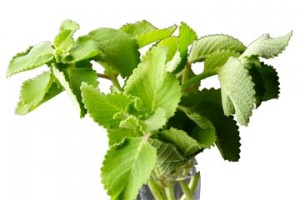
When it comes to flavour and aroma, I find the broad leaf thyme to be the most potent, perhaps that is because of it sheer size and like I said above, the leaves are also thick. When you grind this thyme it becomes moist unlike the others, so the natural oils of the leaves makes it more potent than the other two. To use the broad leaf thyme in food, it is usually chopped or minced. The Guya-nese fine thyme is the more woodsy in flavour of the three, highly aromatic, it is to be used sparingly. And finally, the really fine thyme or let’s say the regular thyme, is the least intense and a cook can get away with using a lot of it in a dish without overpowering the dish itself or other ingredients.
Like many of you, I use thyme all the time, sometimes onions and thyme are all the ingredients I add to a dish. Soups, stews, rice and peas, cook-up rice, pelau, garlic pork, you name it and thyme is there. My Auntie Betty used to make a bang-on Fried Rice and Fried Chicken and what made it unique was thyme. You knew that it was not Chinese Fried Rice or an imitation of it you just knew that this was a homemade fried rice and Auntie Betty put her stamp on hers by the use of thyme, it was subtle but very much present.
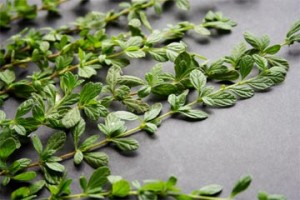
Of the three varieties of thyme I have available to me, I mostly use the Guyanese thyme and the regular thyme as the broad leaf thyme is not available every week and I like the idea of just dropping the regular thyme, stem and all into the pot and fishing it out at the end. The Guyanese thyme, the leaves come off much easier than the regular thyme so that is a breeze to use. For long cooking dishes such as soups and stews and cook-up rice, I opt for the Guyanese thyme but rice and peas and vegetable sautés I like the regular thyme. The broad leaf thyme I tend to use if I am making an herb paste or making green seasoning.
One of the ways I like to use the broad leaf thyme is to make a garlic-thyme butter that I smear on top of pan-seared pork chops and then put in to the oven to finish cooking. Because the thick leaf thyme is so potent, it stands up to the garlic and the extra cooking in the oven.
Have you ever had thyme lemonade? So good! You must try it. Add 1 cup of water and 1 cup of sugar to a pot and 2 tablespoons of fresh thyme leaves (add more if you like) put on high heat and stir to dissolve the sugar, let it boil for exactly 1 minute, remove from the heat and leave it to cool completely, all the while the leaves will be steeping. Squeeze your lime or lemon juice, add it to a pitcher along with cold water and sweeten it with the thyme-infused simple syrup you made, garnish with a couple of thyme leaves if you like and serve over ice, unbelievably refreshing.
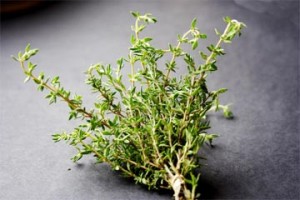
You can make thyme tea too or you can add it with
ginger to make thyme-ginger tea. Simply bring the water to a boil add the thyme leaves and if using a couple thick slices of ginger, let boil for 1 minute and remove from heat and steep for a couple of minutes, sweeten according to taste or you can just drink as is.
I often get requests for a fried fish recipe and the one I use is very simple – 1 large clove of garlic, lots of fresh thyme, salt and black pepper. I grind everything to a paste and gently massage the fish all over with it. The paste in essence perfumes the fish, a quick, light dust in flour and shallow fry. The fried fish always has that homemade taste to it and that taste obviously comes from the fact that a lot of our everyday cooking at home involves the use of thyme. It’s a taste of home.
Cynthia
tasteslikehome@gmail.com
www.tasteslikehome.org

